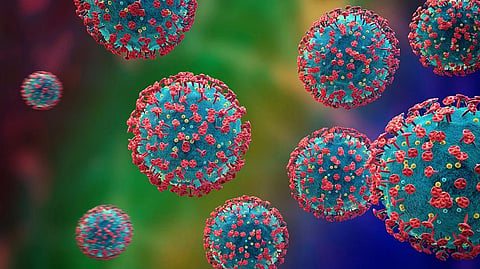

China has been at the centre of attention for the emergence of any new, potentially more dangerous variants of the SARS-CoV-2 virus triggered by the tsunami of cases the country is witnessing after abruptly abandoning the three-year-long zero COVID policy.
But now, another sub-variant emerged in New York in mid-December and is rapidly becoming dominant. XBB.1.5, an omicron offspring, appears to be the driving force behind the surge in cases in parts of the United States.
Several countries have mandated testing, India included, for any travellers coming from China. The World Health Organization (WHO) has repeatedly urged the government for transparency on information and recently met with Chinese officials where similar requests for regular sharing information were made. As attention was redirected, XBB.1.5 gained ground in New York.
Among its key mutations are the ability to be even more immune evasive than its predecessors and a high ability for ACE2 binding — the first step the virus takes in infecting the human cell.
By the end of December, XBB.1.5 prevalence doubled in a week and had outcompeted all other circulating variants, data from US’ Centres for Disease Control and Prevention (CDC) showed.
On December 30, CDC announced it is closely tracking XBB.1.5 and how it responds to available vaccines and treatment.
Ryan Gregory, professor of evolutionary biology at the University of Guelp’s Biodiversity Institute of Ontario in Canada, believes XBB.1.5 — a recombinant of two members of the BA.2 lineage of omicron — is “very instructive about how dynamic and wide-reaching SARS-CoV-2 variant evolution is.”
It also shows why confident dismissals of each variant’s risk and a focus only on snapshots at one time in one place are foolish, according to Gregory.
More than 650 sub-variants of omicron are currently under circulation, some more dominant than others depending on the geography.
But since the arrival of omicron in November 2021, no other variant of concern (VoC) has emerged. To account for the rapid evolution within the omicron branch, the WHO formulated another category of variants; omicron sub-variants under monitoring.
The WHO noted:
Each constellation (of mutation) may or may not differ in the public health risk it poses and each lineage that includes substitutions in key sites may need further investigation to assess whether its characteristics diverge or not from those that define the variant of concern they stem from.
As of November 20, 2022, BA.5, BA.2.75, BA.4.6 and XBB are the variants currently being monitored. While omicron is the only circulating VoC, it’s being used as an umbrella term to include all descendent lineages and recombinants.
“WHO emphasises that these descendant lineages should be monitored as distinct lineages by public health authorities and comparative assessments of their virus characteristics should be undertaken.”
The current evolution of the SARS-CoV-2 virus has been described by experts as convergent evolution — where the mutations that helped the virus evade certain antibodies are found repeatedly by the virus in various lineages — Down To Earth had reported earlier.
In the first two years of the pandemic, there was little population immunity — derived either from natural infection or vaccination.
Since the environment dictates how the virus evolves, in the absence of large-scale immunity, there was not enough selective pressure on SARS-CoV-2 to mutate.
Today, with over 660 million people infected and nearly 65 per cent of the population fully vaccinated across the world — as per Our World in Data — the landscape in which SARS-CoV-2 is circulating is very different.
Source: Wang et al, Cell
Since the virus was first detected in China’s Wuhan in late 2019, each variant of concern has caused a distinct wave. In contrast, the past year has been marked by different omicron sub-variants erupting across the world.
Whether any of them will be assigned a new Greek name depends on their characteristics and any change in epidemiology. As we enter the fourth year of the pandemic, it is critical we look at the big picture when weighing the threat of a sub-variant.
“Variants that do not cause a major wave where they first take off can move around the world and cause waves elsewhere (e.g., BF.7 in China right now) and they may continue to evolve, including through recombination with other variants,” Gregory noted in his Twitter analysis.